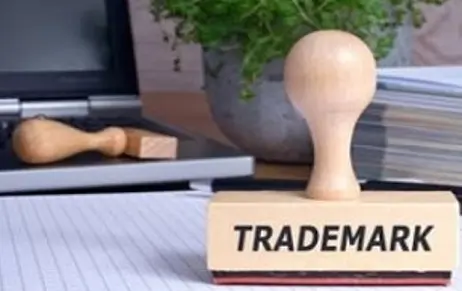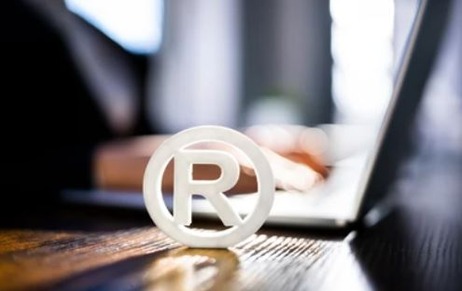TRADEMARK A trademark is something that we encounter on a regular basis. It is the…
Trademark Infringement & Their Defenses in India
Introduction
The Trademarks Act, 1999 is the legislation that protects trademarks in India. The Act lays down the principles handling registration, protection and penalties against infringement of trademarks. Trademarks are given the status of intellectual property over the globe. There are numerous worldwide & national organizations which try to protect trademark as an intellectual property. The Indian Patent Office administered by the Controller General of Patents, Designs and Trademarks is referred to as the organization which deals with the protection of trademark in India.
In other words, trademark infringement refer to a situation when a person makes unauthorized use of a particular trademark misrepresenting the people at large and causing livelihood of confusion regarding the same.
Types of Infringements
(a) Direct Infringement
Section 29 of the Trademark Act 1999 provides for direct infringement which can be happen in the following situations:
- Use by an unauthorised person:
It refers to a situation when an unauthorized person who is not authorized by the trademark holder makes use of the mark.
- Identical or deceptively similar:
The trademark used by the unauthorised person should be either identical or deceptively similar to that of registered trademark. In other words, identical or deceptive similar means that the mark is so identical in nature that it can cause livelihood of confusion and also mislead the consumers regarding the same.
- Registered trademark:
The trademark Act 1999 provides protection to the registered trademark which are being registered with the trademark registry in India.
In case of unregistered trademark, the common law of passing off is used to settle disputes. It is a tort law that is used where injury or damage is caused to reputation of the person associated with the person.
- Class of goods or services:
For the infringement of the trademark, the unauthorised use of the mark has to be used for the goods or services that fall under the same class of the registered trademark.
(b) Indirect Infringement
There is no provision as such that deals with the indirect infringement specifically, but it provides for the liability of the same. It provides liability for not only the principle infringer but also to any other person abets or induces that principle infringer to infringe. There are two types of liability in case of indirect infringement:
- Vicarious liability:
As per section 114 of the Act, when a company commits an offence, the each and every person who is responsible to the company is accountable for the infringement. Except the person who acted in good faith without having knowledge of such infringement.
- Contributory infringement:
It refers to a situation to which these three basic elements contribute:
(a) When the person himself knows of the infringement
(b) When the person materially contributes to the infringement constituting direct infringement
(c) When the person induces the principal infringer to commit an infringement
When the person induces the principal infringer to commit infringement In the case of contributory infringement, there is no exception as there exists no chance of the contributory infringer to act in good faith.
Defenses Available Against Trademark Infringement
- Fair Use
The accused infringer in order to take this defence need to establish that he has taken the consent of the authorized owner of the trademark or either proves that he doesn’t have any intention to defraud or mislead the consumers of the goods.
- Descriptive fair use
It can be taken as a defence when a mark is used in good faith mainly for the descriptive purpose and not for a specific mark or product.
- Nominative fair use
This can be taken as a defence when a mark is listed in reference to the registered proprietor’s goods and not the user’s goods. It is justifiable when such mark is used for facilitating identification of the goods.
An application for such defence needs following conditions to be satisfied:
- The product or service is not identifiable without the mark,
- The mark was used only to a reasonable extent to facilitate its identification,
- The use does not falsely suggest endorsement or sponsorship by the trademark
- Prior Use
Prior user of the mark has more rights than the subsequent user even if he is the registered one. It can be taken up as a defence by the defendant when he is using it for a long duration of time and has gained reputation too in his business as compared to the registered user. It is further stated that this defence can be taken up in a situation when defendant has not renewed his previously registered trademark but his business is continued under the same mark.
- No Confusion or Difference in Essential Features
It refers to a situation in which the courts not only consider the phonetic similarity between the marks but also whether the two marks have different features.
In the leading case of S.M. Dyechem Ltd. v. Cadbury (India) Ltd1,the Supreme Court laid down that in deciding a case of trademark infringement , court must have a look into the differences and laid down the test:
- Is there any special aspect of the common features which has been copied?
- Whether the dissimilarity of the part or parts is enough to mark the whole thing dissimilar?
- Whether when there are common elements, should one not pay more regard to the parts which are not common, while at the same time not disregarding the common parts?
- What is the first impression?
Applying this test in the case, it was held that the two marks were different in essential features and would not be a cause for confusion. Therefore, no cost was awarded.
- Non-use of the Mark by the Registered Proprietor
It refers to a situation in which the burden of proof is on defendant to prove the non-usage of the mark by the proprietor of the trademark.further he need to show that he has a legitimate interest for the same and also the non-usage of the mark by the trademark owner is not due to his negligence or fault but is mainly the case of force majeure or any unforseable circumstances.
- Delay and Acquiescence
In situations when there has been a delay in bringing action of the infringement by the plaintiff, it is stated that the plaintiff’s right have been waived off as the trademark owner and implicitly or explicitly permitted use of its mark by the subsequent user.
- Parody
It is being stated by the Delhi High Court in the case of Tata Sons Ltd v. Greenpeace International that reasonable parody, comment of a registered trademark can be made if the intention of the person is to draw attention to some activity of the owner of the trademark. Where the use is not completely for a commercial purpose, the court may allow parody. This emerged because the courts gave more importance to the freedom of speech and expression as against trademark law.
- Invalidity of Registered Mark
It can be taken up as a defence by the defendant that the registration of mark by the plaintiff is invalid i.e is being done through an unfair advantage . in such case , it would not be called as a trademark infringement.
- Remedies for Trademark Infringement
There are the remedies for which the plaintiff is entitled to claim for infringement or passing off of his trademark.
- Injunction by prohibition of use of the infringing
- Injunction by cancellation of the registration, if the mark has been
- Damages (may include punitive damages) or account of
- Costs towards legal
In order for a court to award compensatory as well as punitive damages, proof of deception and intention of the infringer to infringe the plaintiff’s trademark must be established.
In the case of a criminal proceeding, as per section 103 of the Act , the court may dictate:
- Imprisonment for a period not less than six months that may extend to three years
- A fine that is not less than Rs 50,000 that may extend to Rs 2 lakh
Conclusion
The protection of the trademark is necessary for the business point of view as well as for the protection of customers from fraud and cheating.
Even though the act provides for the defences available to the defendant still the burden of proof is on the defendant only to prove that he has not infringed the trademark.
Author: Manya Jaitley, an intern at IIPRD. In case of any queries please contact/write back to us at [email protected].



